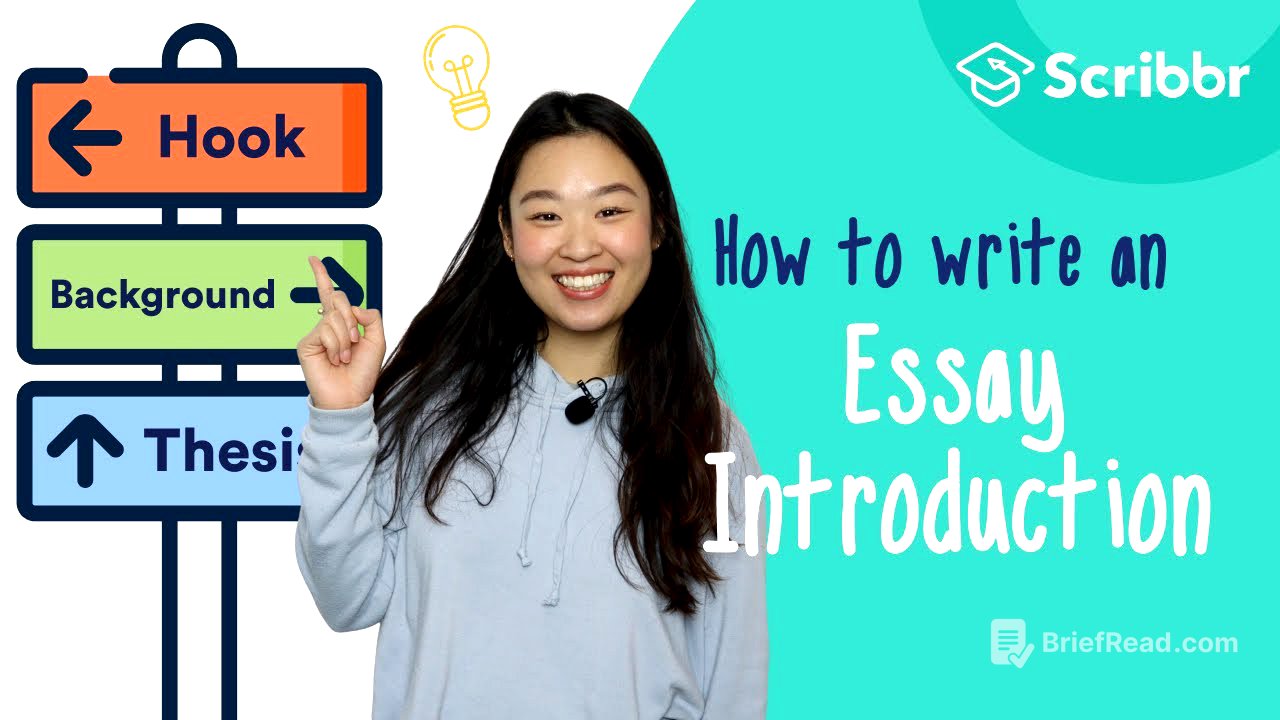TLDR;
This video provides a step-by-step guide on how to write an effective introduction for an essay. It emphasizes the importance of grabbing the reader's attention with a strong hook, providing necessary background information, presenting a clear thesis statement, and mapping out the essay's structure.
- Start with a captivating hook to grab the reader's attention.
- Provide relevant background information to contextualize your argument.
- Present a clear and concise thesis statement that sums up your main argument.
- Map out the structure of your essay to guide the reader through your argument.
Step 1: Hook Your Reader [0:21]
The first sentence of an essay sets the tone and should immediately capture the reader's interest. This "hook" should be clear, concise, and intriguing, sparking curiosity about the topic. Instead of stating the topic plainly, make a bold claim or link it to relevant social themes. For example, when writing about the history of Braille, instead of saying "This essay is about Braille," start with "The invention of Braille was a major turning point in the history of disability." This approach makes a statement about its significance and connects it to broader social issues.
Step 2: Give Background Information [1:23]
After the hook, provide the reader with the necessary background information to understand your argument. This may include describing the historical or social context, defining key terms, introducing relevant theories or research, or setting up different sides of a debate. However, avoid including evidence and interpretation, as these are better suited for the main body of the essay. For instance, when discussing Braille, introduce the writing system and its inventor, Louis Braille, and then outline the social context of 19th-century France, where blindness was stigmatized and access to reading and writing was limited.
Step 3: Present Your Thesis Statement [2:29]
The thesis statement is a crucial component of the introduction, summarizing the overall argument in one or two sentences. It should not merely state a fact but make a claim that requires evidence and explanation. The thesis statement should clearly convey your position in a debate or your central point about a topic, indicating the reasoning behind it. In the Braille example, the thesis statement could be: "As the first writing system designed for blind people’s needs, Braille was a groundbreaking new accessibility tool. It not only provided practical benefits but also helped change the cultural status of blindness."
Step 4: Map Your Essay's Structure [3:32]
In longer essays, it is helpful to conclude the introduction by outlining what will be covered in each part. This signposting gives the reader a clear sense of the direction your argument will take. Keep it concise and focus on the main points that will be discussed. For the Braille essay, the structure could be mapped out as follows: "This essay begins by discussing the situation of blind people in nineteenth-century Europe. It then describes the development of Braille and its gradual acceptance within blind education. Subsequently, it explores the wide-ranging effects of this invention on blind people’s social and cultural lives."









